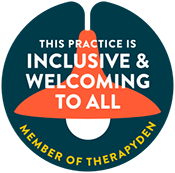Claustrophobia, the intense fear of confined or enclosed spaces, affects millions of people worldwide and can trigger panic attacks, anxiety, and even physical symptoms like sweating or rapid heartbeat. Check out our blog “3 Ways to Manage Your Physical Anxiety Symptoms.” But what actually causes this fear to take hold? While every individual’s experience is unique, experts believe claustrophobia often stems from a combination of genetic, psychological, and environmental factors. Some people may be more biologically prone to anxiety disorders, while others might develop the fear after a traumatic event, such as being trapped in a small space or experiencing a frightening situation in childhood.
According to the National Institute of Mental Health, one in eight adults may have this phobia or roughly 12.5% of the adult population in the United States. In many cases, claustrophobia develops early in life and becomes more pronounced over time. The brain's fear response can become overly sensitive, reacting strongly even in mildly enclosed spaces like elevators or crowded rooms. Learned behavior may also play a role- if a person witnesses someone else showing fear in a confined space, they may internalize that response themselves. Ultimately, understanding the root causes of claustrophobia is the first step toward managing it, whether through working with a phobia counselor at Anchor Therapy, exposure techniques, or self-guided strategies to reduce anxiety.













